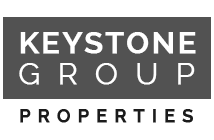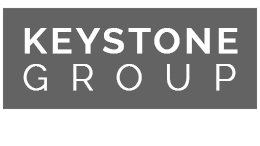For information on Southern California coastal homes and real estate in Orange County, Los Angeles and San Diego counties, call Bob Cumming of Keystone Group Properties at 310-496-8122. We are able to assist property owners and buyers in the So Cal communities from Malibu real estate, to Newport Beach homes and south to Redondo Beach, San Juan Capistrano, and La Jolla.
If you fall behind in your mortgage payments, you will receive a lot of mailers offering help. There are people who may wish to take advantage of a homeowner in a difficult situation. It is important to understand your options. Keystone Group Properties dba Southern California Home Source would like to explain them to you. If you have questions, please feel free to contact us.
What is a Foreclosure?
Foreclosure in a non-judicial state like California is initiated by a bank or a lien holder for the purpose of selling the debtor’s real estate to pay the loan or other lien (mechanic’s lien or judgment). There are specific steps the bank or lien holder must take to force the sale of the property. These steps are governed by various State and Federal laws. Generally, they include contacting the homeowner after missed payments to attempt to work it out, a Notice of Default, and Notice of Trustee Sale. Here is a list of California Civil Codes that are the main statutes governing foreclosures in California:
California Civil Code 890 et seq. Rent Skimming;
California Civil Code 1695 et seq. Home Equity Purchasing;
California Civil Code 2924 et seq. Trustee’s Sale Procedure;
California Civil Code 2945 et seq. Foreclosure Consultant;
California Civil Code 1367 et seq. Foreclosures on HOA Assessments, Redemption, etc.
A bank will foreclose on a person’s home if it believes that this is the only way the situation can be resolved. A bank wants to keep a loan portfolio full of performing loans – not defaulting loans. After payments are missed and before a Notice of Default is filed, the loan is on a bank’s books as a “toxic asset,” requiring it to increase reserves. After a Notice of Default is filed, the loan is off the books as a “toxic asset” and becomes a “collectible asset.”
If you are unable to make payments, call the bank immediately. Do not ignore their letters. The earlier the contact, the more likely the bank will try to negotiate a plan to enable the loan to be performing again.
What are your Options?
Option #1 – Sell Your Home
Depending on the market and the area in which you live, you may consider selling your home if there is enough equity to pay off the existing liens. However, you may not be able to do a regular sale if you owe more than what your home is worth.
Option #2 – Loan Modification: Renegotiate with the Bank
Note that although banks are required to attempt to work with the homeowner, they have been reluctant to reduce principal balances. Here is a list of issues the bank may discuss with you when negotiating a loan modification:
– Forbearance – Forbearance is the postponement for a limited time of a portion or all of the payments on a loan in jeopardy of foreclosure (you fell behind on your payments – i.e. lost your job). Partial or full payment waivers had their origins in the Great Depression. A bank expects that during the moratorium period, the borrower can solve the problems by securing a new job, selling the property or finding some other acceptable solution. You may qualify for this option is you recently lost your job. Contact your bank and inquire if you meet the requirements for forbearance.
– Forgive the Payment – If you can convince the bank you experienced a temporary setback, and you will not miss a payment again, there is a small chance you may be able to have the delinquency forgiven. They may waive the amount.
– Interest Rate Freeze/Reduction – If you have an adjustable rate mortgage, the bank may agree to freeze the interest rate or change the interest rate to an amount that is mutually beneficial.
– Increase Term of the Loan – A bank may increase the term of the loan, for example from 30 years to 40 years, to lower payments by spreading them over a longer period of time.
– Spread the Delinquent Payment over the Term of the Loan – For example, you may have a normal mortgage payment of $1500 per month. You may be four months behind. The bank may allow you to pay back the $6,000 plus interest over say five years by adding approximately $100 per month to your payment. You will now pay $1600 per month for five years and then $1500 per month until the mortgage is paid.
– Move the Delinquent Payment to the End of the Loan – If you have some equity in your property, the bank may move the amount owed to the back of the loan. There may be a balloon payment at the end or larger payments for a few months.
– Make an Additional Loan to You – Some loans that are backed by the government contain provisions to help homeowners who are in trouble. Check different government web sites such as the Department of Housing and Urban Development (HUD) and the Department of Veteran Affairs (VA) for more information.
Option #3 – Reinstatement
Prior to a foreclosure sale, borrowers have the right to reinstate a delinquent loan. The reinstatement option gives homeowners the opportunity to make up back payments plus any incidental charges incurred by the bank such as filing fee, trustee fees and legal expenses. Paying off the reinstatement amount will cancel the foreclosure and enable the homeowner to continue to live in the home as if no default occurred. Consult with a real estate attorney or an experienced real estate broker because reinstatement laws vary from state to state.
Option #4 – Refinance Your Home – Redemption
Refinancing your home and paying off the existing loan sounds easy and may be an option that you have already pursued. In this current real estate climate it has become almost impossible to refinance your home if you have less than 10-20% equity.
Option #5 – Conveyance by Trust
Conveyance by Trust, seller-assisted financing, may be used where the homeowner has a good loan and where the amount owed on the loan is close to what your home is worth. Please see Easy Conveyance by Trust – Seller and Buyer. Keystone Group Properties dba California Home Source has experience with conveyance by trust and would like to help you assess whether this may be good for you.
Option #6 – A Short Sale – Not a Typical Sale
If your home is worth less than what you owe on your mortgage, a short sale may be the best option. In a short sale, the homeowner and bank agree to sell the property for less than the outstanding balance of the loan, and the proceeds go to the bank. The bank takes the loss and moves on. A short sale is less damaging to a borrower’s credit than a foreclosure, and stays on a credit report for a shorter period of time.
Banks often have loss mitigation departments that evaluate short sale transactions. Many have pre-determined criteria for them. Let Keystone Group Properties dba Southern California Home Source provide our expertise to help you.
You need to be aware of what the tax implications of a short sale may be. The Mortgage Forgiveness Debt Relief Act of 2007, also known as Section 2 of H.R. 3648 was passed to eliminate the short sale tax consequence of having to pay the additional tax that would be due on the loss to the bank. Basically, any loss to the bank would be treated as ordinary income to you because what was a loss to the bank became a gain to the former home owner. Keep in mind that this will eliminate the federal tax but you still may owe money to the state. You may need to consult a tax professional to understand the consequences for your current situation.
Option #7 – Deed in Lieu of Foreclosure
For homeowners who have no opportunity to reinstate, redeem or even sell their property and just want out of it, a deed-in-lieu of foreclosure may be a viable option. Essentially, a deed-in- lieu of foreclosure is a transfer of title from a borrower to the bank, which the bank accepts as full satisfaction of the mortgage debt. With this option, you as a borrower voluntarily “give back” your property to the mortgage company. You won’t save the house, but you do avoid the trauma of foreclosure and reduce the negative impact on your credit.
Option #8 – Bankruptcy
Filing bankruptcy does not permanently stop foreclosure, but it can temporarily halt the foreclosure process. Once a borrower in default files a petition for bankruptcy, foreclosure proceedings stop immediately. A homeowner, however, usually hires an attorney to file bankruptcy, which can be expensive. Before considering this option, a homeowner should consult a real estate attorney.
Option #9 – Litigation
Sometimes litigation filed by a homeowner brings the bank “to the table,” and a principal balance reduction is offered. Hiring an attorney to file litigation may be expensive. Keystone Group Properties dba Southern California Home Source may offer referrals.
Option #10 – Foreclosure – Let it go
Allowing the foreclosure to proceed to auction is generally the worst choice. By doing nothing, homeowners will lose the home and any equity they have earned, and will damage their credit. Some states, but not California, allow banks to go after borrowers in court for any deficit between what the house eventually sells for and what the homeowner owes. This is called a deficiency judgment. Unfortunately, many homeowners do nothing and allow foreclosure to proceed.




